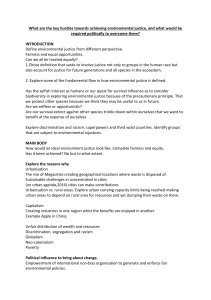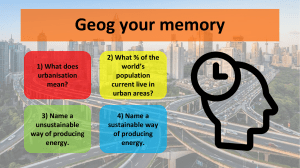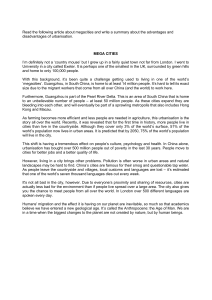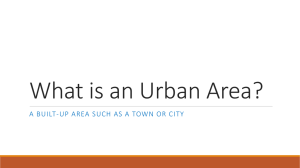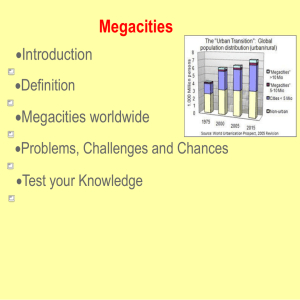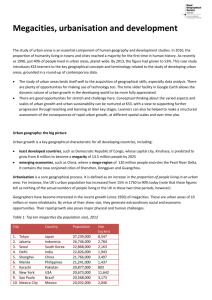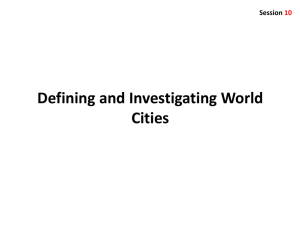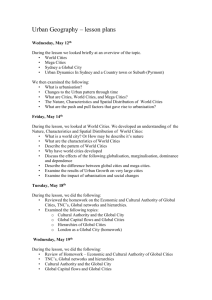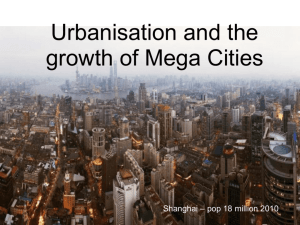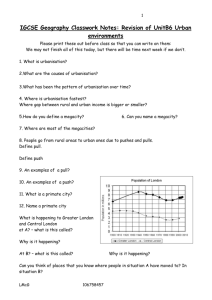Human Topic 7 The Challenges of an Urban World
advertisement
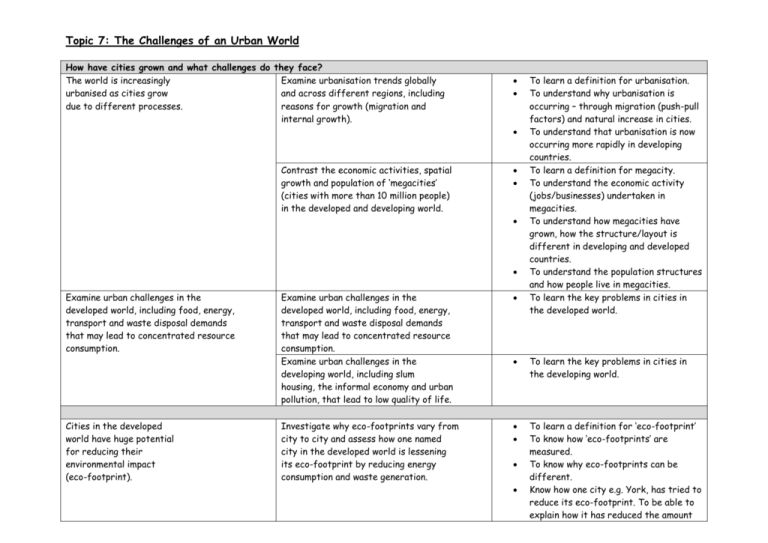
Topic 7: The Challenges of an Urban World How have cities grown and what challenges do they face? The world is increasingly Examine urbanisation trends globally urbanised as cities grow and across different regions, including due to different processes. reasons for growth (migration and internal growth). Contrast the economic activities, spatial growth and population of ‘megacities’ (cities with more than 10 million people) in the developed and developing world. Examine urban challenges in the developed world, including food, energy, transport and waste disposal demands that may lead to concentrated resource consumption. Cities in the developed world have huge potential for reducing their environmental impact (eco-footprint). To learn a definition for urbanisation. To understand why urbanisation is occurring – through migration (push-pull factors) and natural increase in cities. To understand that urbanisation is now occurring more rapidly in developing countries. To learn a definition for megacity. To understand the economic activity (jobs/businesses) undertaken in megacities. To understand how megacities have grown, how the structure/layout is different in developing and developed countries. To understand the population structures and how people live in megacities. To learn the key problems in cities in the developed world. Examine urban challenges in the developed world, including food, energy, transport and waste disposal demands that may lead to concentrated resource consumption. Examine urban challenges in the developing world, including slum housing, the informal economy and urban pollution, that lead to low quality of life. To learn the key problems in cities in the developing world. Investigate why eco-footprints vary from city to city and assess how one named city in the developed world is lessening its eco-footprint by reducing energy consumption and waste generation. To learn a definition for ‘eco-footprint’ To know how ‘eco-footprints’ are measured. To know why eco-footprints can be different. Know how one city e.g. York, has tried to reduce its eco-footprint. To be able to explain how it has reduced the amount Analyse the potential for more sustainable transport in a named city in the developed world. Different strategies can be used to manage social and environmental challenges in developing world cities. Consider the success of strategies to improve quality of life in cities in the developing world: self-help schemes, the work of NGOs, urban planning (e.g. Curitiba). Evaluate the advantages and disadvantages of attempts to develop less-polluted cities, e.g. Masdar City, Mexico City. of energy it uses and reduce the amount of waste if generates. To be able to describe how one city e.g. London has tried to make its transport more sustainable e.g. congestions charge, low emission zones, improving cycle provision (Boris Bikes), electric cars, SkyCycle bike routes. Be able to discuss whether these strategies have been successful. To understand strategies introduced in LEDC cities to improve quality of life. To be able to give an example and describe a self-help scheme To be able to describe the work of nongovernmental organisations. To understand how the planning of urban areas can improve quality e.g. Curitiba. To be able to give evidence as to whether these schemes have been successful. To learn a case study of one city where attempts have been made to make it less polluting. To understand the advantages and disadvantages of strategies put in place to make it less polluting.
